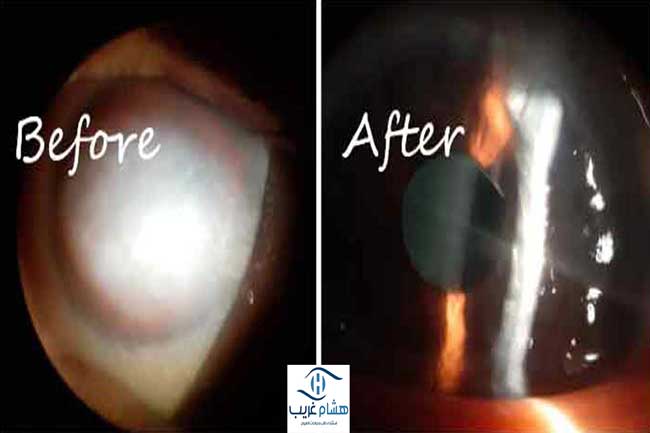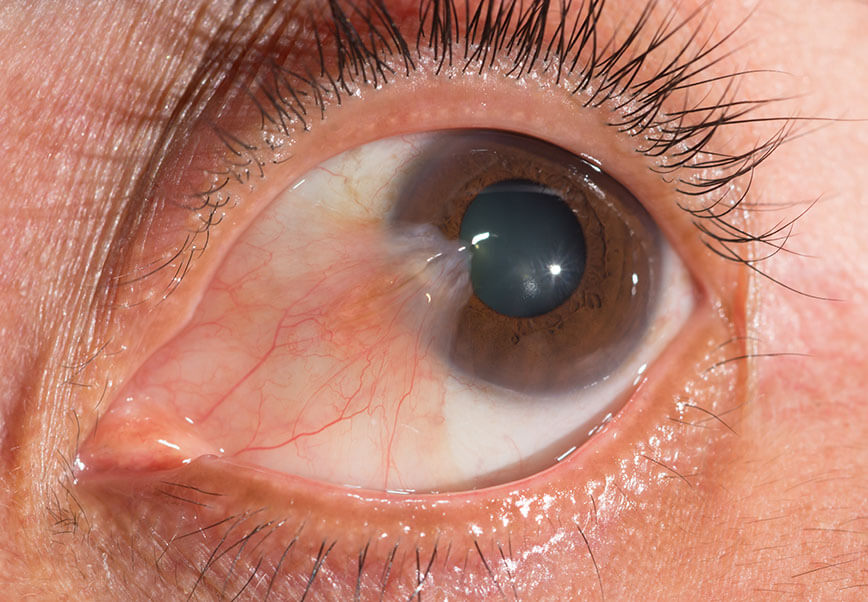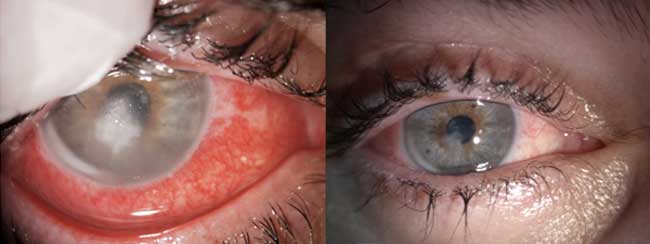Corneal infection may occur as a result of a simple injury, such as wearing contact lenses or entering a foreign body inside the eye, it can be caused by a bacterial, viral, fungal or parasitic infection.
Corneal infection may occur as a result of a simple injury, such as wearing contact lenses or entering a foreign body inside the eye, it can be caused by a bacterial, viral, fungal or parasitic infection.
Prof. Dr. Hesham Gharieb answers the most frequently asked questions about corneal infections…
What are the symptoms of corneal infection?
-
- Eye pain and redness
- Decreased vision
- Excessive tears or colored discharge
- Excessive sensitivity to light
The causes of the occurrence of corneal infection are varied, including
-
- Corneal injury: It includes any scratch on the surface of the cornea, such as the presence of a foreign body or the wrong use of contact lenses
- Reduced immunity as a result of diseases or treatment that affects immunity
- Use of medications or drops without consulting a doctor: such as topical cortisone or topical antibiotics
- Presence of corneal surface diseases or severe dry eye
How can my contact lenses cause corneal infection?
-
- Excessive and wrong use of contact lenses leads to many problems
- Sleeping with contact lenses
- Use lenses after their shelf life
- Interpersonal exchange of lenses
- Use running water to clean lenses
- Using contact lenses while swimming in swimming pools
What are the complications of corneal infection?
-
- The problem of corneal inflammation/ulcers lies in the presence of a microbe that causes the cornea to gradually dissolve, and this can or lead to a hole in it with the possibility of self-emptying the eye.
- The microbe can also travel from the surface of the eye to the inside and from it to the brain in conditions that pose a threat not only to vision but also to your life.
Detect the problem early.....
How will my affected eye be treated?
Types of treatment for microbial keratitis:
- Drug therapy:
- Using concentrated antibiotic drops and close follow-up
- Surgical treatment:
- Such as supporting the cornea with a patch of conjunctiva or amniotic membrane transplantation to treat corneal ulcers
- Sometimes a complete corneal transplant is needed to get rid of the corneal abscess.

What will my vision be after recovering from corneal infection??
The first concern remains the treatment of the microbe that causes inflammation
When recovery occurs, the body replaces the transparent collagen tissue of the cornea with opaque fibrous tissue, causing opacity on the cornea. The location and weight of this opacity is determined by the type of microbe, the body’s response, and the delay in taking the necessary treatment. Generally, this opacity will be evaluated after healing and treated together either with glasses, therapeutic contact lenses, lasers, or even partial corneal transplantation.
Are all corneal inflammation caused by infection?
There are many corneal inflammation that occurs without the presence of a microbe as a result, for example, of the presence of some diseases or immune conditions in the body or eye. Therefore, you must rely on an ophthalmology consultant for diagnosis and treatment


